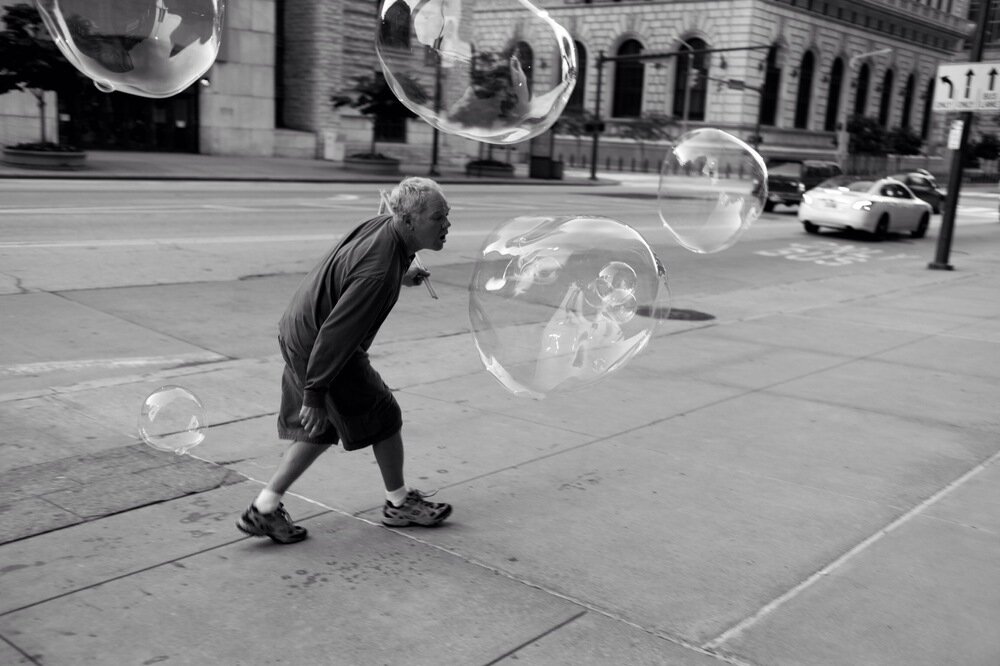Buying Your First "Real" Camera

A friend of mine approached me recently, looking for camera advice. She has been experimenting with photography and is interested in investing in getting her first "real" camera, but didn't know where to start. I've made recommendations like this on numerous occasions, so I thought it would be useful to document my thoughts and findings here. Most people, when they get to this stage, run out to Best Buy, talk to the guy there, and walk away with a Canon T3i with a kit zoom lens. I just hope that you don't without considering other options first. I wish I hadn't.
What is your goal?
The most important factor when camera shopping is your own intentions. The first thing you should do is ask yourself what you really want out of a camera.
- Lots of zoom. - Lots of megapixels.
Did you tell yourself you wanted this? I bet you don't.
What's Actually Important
I bet you don't know what you want in a camera. Perhaps you want to be able to capture memories of the world around you with a small, high-fidelity device. You want it to be your companion on your adventures, not be a burden. You don't want to fight its controls. You want it to "just work".
You want great build quality. You want great optics. You want it to be simple. You want it to be portable. You want it to be discreet.
If you buy that Canon T3i you think you want, it may end up staying at home most of the time. You'll look like a tourist, lost in a sea of buttons and menus. Don't get me wrong, it's a fantastic camera; it just shouldn't be your default choice.
Prime vs Zoom
Before we look at camera bodies, it's important to consider what type of glass you want to shoot with. There are two types of lenses that you need to consider: primes and zooms.
A Zoom lens is what you think it is — a lens that lets you get closer to your subject without moving your camera. This a very common style of lens with beginners.
A Prime lens is the basically the opposite — a lens that doesn't have any zoom, but has a fixed focal length. These lenses are much simpler, optically superior, easier to understand, and they teach you to be a better photographer. Instead of turning a dial to get closer to your subject, you move your feet and actually get physically closer. This consistency helps you bond with your lens, making it an extension of your own eye.
I only shoot with prime lenses. I am so familiar with my 35mm lens, that I can estimate (with excellent accuracy) what a photo will look like before I even pull the camera up to my face.
Of course, I learned this lesson the hard way. At first, I ended up spending several thousand dollars on a multitude of high-end zooms, only to find that they were making me a lazy photographer that didn't understand aperture. Eventually, I sold them all, and replaced them with a lovely set of primes. My photography and experience vastly improved.
Nowdays, I only have one lens — the Leica 35mm Summicron f/2, and it is permamently attached to my Leica Monochrom. Having only a single lens is very liberating — the constant choice of which lens to bring out stressful. You always worry that you brought the wrong one. Now, I never have to think twice. I've been using a setup like this for a year and a half and the improvement in my photography has been dramatic.
Camera Recommendations
Let me show you a few of my favorite lower-priced cameras.
Fujifilm X100
The Fujifilm X100 is easily one of my favorite cameras in production today. This beautiful, compact camera blew the photography world away when it was released last year.
- A wonderful 35mm-equivalent prime lens with a fast maximum aperture (f/2.0). This is considered by many to be the most universally useful focal length. It's all I shoot. - Great low-light performance for the price. - Integrated ND Filter (sunglasses for your lens) for bright environments. - Hybrid Optical and Electronic Viewfinder, gives you the best of both worlds. - Classic controls. Every setting you need has a physical dial. No menu-diving. - Same sensor found in entry-level SLRs, in a compact body. - Elegant design, inspired by the legendary Leica M3
I only recommend this camera to people that really want to get "into" photography. Within a month, this camera will teach you more about composition, exposure, and depth of field than the typical hobbyist camera (and its image quality will be miles ahead). Fuji has always been an expert lens-maker, and this camera is really showing that off.
I love how well this camera meters both exposure and white balance. While many professional cameras can't handle multiple light sources well (e.g. the sun and a lamp in the same shot), the X100 does so with ease. When editing photos after a shoot, you'll almost never need to compensate for the exposure. I wish every camera worked this well.
My favorite part of this camera lies in one of its subtle details — an old-school aperture ring. This simple interface allows you to directly change the amount of light coming into the lens. This directly effects the brightness of your image, as well as how much of your subject is in focus. Turn this to f/2, and you you will get beautiful blurred backgrounds, turn it to f/8, and everything will be in focus. Believe it or not, this simple dial changed my photography in a deep way. Interface is everything.
There's one small downside, however — the Auto Focus (AF) on the Fujifilm X100 is a little slower than some more popular cameras. It's not a problem, but if you prefer ultra-fast AF, you should consider the more expensive Fuji X110S which claims to have the fastest AF in the world.
Sony RX100
If you aren't sure that you want to get "into" photography, and want a small camera that will fit into your pocket, you should consider the Sony RX100,
- Fast lens (f/1.8!), with a great zoom range. This is extremely rare in pocket cameras. - Dial around lens is configurable for any parameter (aperture, shutter speed, exposure compensation, etc). - Impressive low-light performance. - Great battery life, recharges over USB. - Top-knotch build quality.
I don't think this camera will make you better photographer, but if you just want a high-end replacement for your existing pocket camera, the Sony RX100 is a perfect choice.
Olympus OM-D
If you really have your heart set on an inter-changeable lens system, you can't go wrong with the Olympus OM-D. This beautiful camera has a steep price tag, but you really get what you pay for.
- Integrated Electronic Viewfinder (EVF) is extremely responsive, feels like a glass window. - Micro four-thirds lens system is considered by many to be the future of accessible photography, despite its smaller sensor size. - Great feel in the hand and control ergonomics. - Very portable, without compromising image quality.
Best of all, the Olympus OM-D has some excellent glass available.
Questions?
Of course, there are many other great options out there. If none of these cameras resonated with you, I encourage you to keep looking for one that does. Maybe the Sony RX1, Sony NEX-7, or Panasonic Lumix LX7K?
If you have any questions about a camera you're thinking of getting, send me an email. I look forward to hearing from you!
References
- Kenneth Reitz's 500px - Fujifilm X100 on Amazon - Sony RX100 on Amazon - Olympus OM-D on Amazon

